#Monika Heinreid
Photo
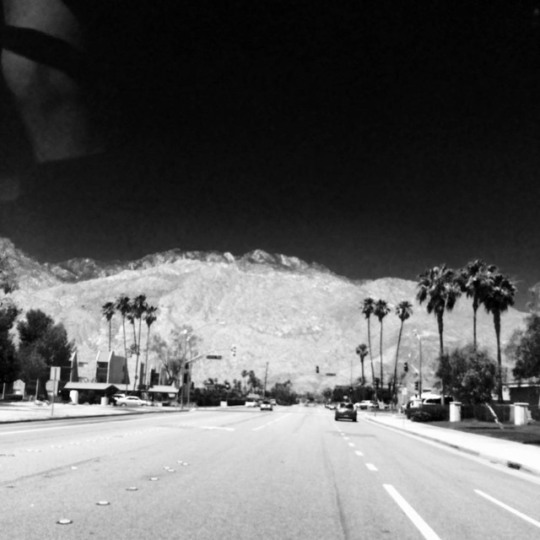
Desert Noir: Wherein writer Jeremy Arnold takes us through a weekend at the Arthur Lyons Film Noir Festival in Palm Springs
For the fourth year in a row, I drove to Palm Springs this May not for music festivals or partying but for NOIR. Film noir. Strange as it may seem, the bright, blinding sun and heat of the desert is actually a perfect setting in which to settle down for 72 hours of dark, rain-soaked streets, shady guys in fedoras and the wicked dames who wreck their lives.
For its 18th annual edition, The Arthur Lyons Film Noir Festival offered 12 classic movies (11 of them in 35mm prints), from Thursday evening, May 11, through Sunday afternoon, May 14. Named for the longtime (and now deceased) Palm Springs resident and film historian who founded it, The Arthur Lyons Film Noir Festival is presented at the Camelot Theater by the Palm Springs Cultural Center and programmed and hosted by film historian Alan K. Rode. Rode is also director/treasurer of the Film Noir Foundation, founded by Eddie Muller, who was also on hand to present some of this festival’s screenings. Eddie, of course, is the host of TCM’s new Noir Alley series, which airs every Saturday morning at 10am, and Turner Classic Movies was one of the festival’s official sponsors this year. A third host, film scholar Foster Hirsch, is also on the Board of Directors of the Film Noir Foundation.
Joining noir experts Alan, Eddie and Foster for some of this year’s films were special guests Monika Henreid (daughter of Paul Henreid), Sara Karloff (daughter of Boris Karloff) and actor Andy Robinson.
I always enjoy making the trip to Palm Springs for this festival because it has a wonderfully relaxed atmosphere. The screenings are always pretty full, but there’s never a rush to get in. The Camelot Theatre has comfy, spacious seats and a nice, big screen (plus good popcorn). The films are spaced out at 10am, 1pm, 4pm and 7:30pm, and with short running times it’s easy to head back to the hotel or go grab a meal between shows and still get back in time for the next picture. And finally, everyone you meet is incredibly nice and enthusiastic. I really couldn’t recommend it more highly for classic movie fans.
Visit the festival’s website for more information and mark your calendars for May 2018!
Meanwhile, here’s a brief rundown of the movies and presentations I took in this year...
THURSDAY, MAY 11
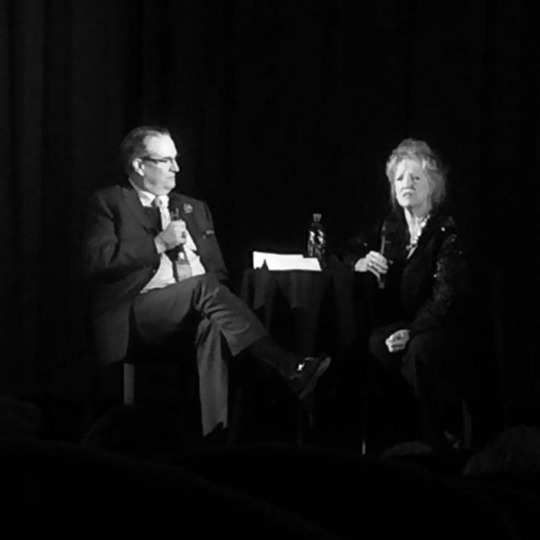
HOLLOW TRIUMPH [also known as THE SCAR] (’48) opened the festival and looked great in its 35mm print. I’ve always loved this movie for its utterly crackpot story (even in an era of movies FULL of crackpot stories!) and for the work of its leading man, Paul Henreid, who also produced (and partially directed, uncredited). As guest Monika Henreid explained in conversation with Alan Rode, her father liked the script because it gave him a chance to stretch himself. He wanted to move away from the debonair, romantic, Continental leading man that he had played so well in CASABLANCA (’42), and NOW VOYAGER (’42) and had been asked to play again and again ever since. In Hollow Triumph, Henreid is bad—twice over! The script by Daniel Fuchs has him playing TWO bad guys. Monika Henreid explained that the studio, Eagle-Lion, asked her dad to produce this picture as well as star in it because it was so low-budget that they couldn’t come anywhere close to his usual acting fee. This way, they were able to pay him to do both. Henreid enjoyed having the extra level of creative control, and Monika said he was “all over” this movie down to the choices of songs and operas heard on the soundtrack (his real-life favorites).
Joan Bennett is perfectly cast in a complex role and HOLLOW TRIUMPH is satisfyingly layered with delicious ironies. Henreid’s principal character is simply fated to not win, and there’s nothing more “noir” than that—except perhaps noir maestro John Alton’s brilliant cinematography.
Following the screening, there was a friendly catered reception outside the theater to celebrate the opening night.
FRIDAY, MAY 12
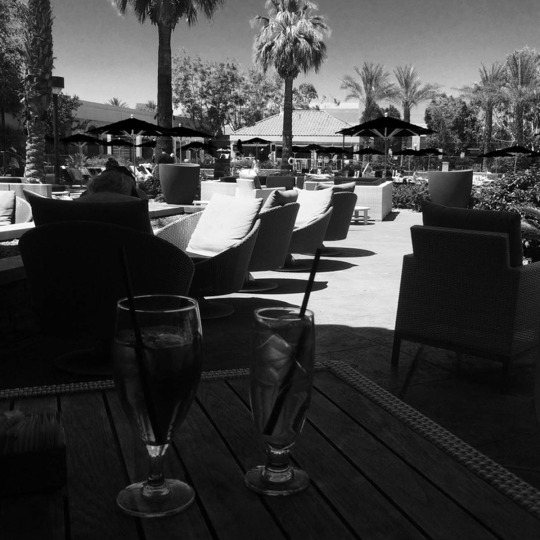
Friday morning started with THE CHASE (’46), but having seen it recently, I opted for a little bit of “vacation” time and instead ambled to the Camelot a little later, for the 1pm screening of SIDE STREET (’50). This exceptional Anthony Mann directed picture, as Rode proclaimed in his intro, is one of the ultimate “shot on location in New York” noirs. Mann uses the claustrophobia of the city to great affect as he follows the story of Farley Granger’s mailman inadvertently getting mixed up in a mess far beyond his planning when he succumbs to the temptation of stealing “only” 200 bucks.
I love how the opening montage of New York skyscrapers comes back to figure prominently in the elaborate car-chase finale. The opening shots are not mere decoration or throwaway images; they function as a kind of unconscious visual foreshadowing, and their reappearance gives the film a satisfying visual unity. SIDE STREET was shot by Joseph Ruttenberg, a reminder that even without his frequent collaborator John Alton, Mann’s films were breathtakingly visual and dynamically lit and framed, proving Mann’s chops as a visual stylist himself. (Of course, Ruttenberg was also one of the great cameramen.)
Next up was ALL THE KING’S MEN (’49), which as Foster Hirsch said in his intro was “not visually noir, but philosophically, politically, emotionally noir.” Indeed, to see Broderick Crawford’s Willie Stark—modeled by novelist Robert Penn Warren on 1930s political populist Huey Long—racing to the top of the political world by the foulest of methods, I was not only reminded of the still-topical aspects of the story but of the way film noir can be described as a “world.” It’s as if Stark, who begins with his heart in the right place, falls into the noir world, is seduced by it, and can’t get out, or even know enough to want to get out. He catches the noir “virus,” which is very hard to cure.
Eddie Muller was back on hand to conclude the day with the stylish BLACK ANGEL (’46), because what would a film noir festival be without an appearance from Dan Duryea?!
SATURDAY, MAY 13

Saturday began with somewhat of a rarity, the “nuclear noir” SPLIT SECOND (’53), in which escaped convicts Stephen McNally and Paul Kelly take shelter in a Nevada ghost town with four hostages while an atom bomb test is set to go off less than a mile away in mere hours. This was the first film ever directed by Dick Powell, and as Foster Hirsch said in his introduction, Powell’s direction is as clipped, efficient and no-nonsense as his portrayal of Philip Marlowe was in Murder, My Sweet, which of course had represented another shift in talents for the former crooner Powell. He directs excellent performances by all involved here including Arthur Hunnicutt, who seems to have wandered in from the set of a nearby western with his welcome, grizzled, western humor. Hunnicutt and everyone else are helped enormously by a tight script with the usual superb dialogue from William Bowers, one of the best dialogue writers in Hollywood history. If you ever get a chance to see any movie written by Bowers, take it. Is Split Second “noir”? Well, its visual look shifts from flat and bright to deep and shadowy when the hostage portion of the story begins and the ever-present knowledge of that atom bomb about to go off certainly lends fatalism, so I would say a resounding “yes.”
The 1pm screening was William Cameron Menzies’ excellent and little-known Columbia film ADDRESS UNKNOWN ('44). Well, perhaps not that little-known anymore - I had seen it just six weeks earlier at Noir City Hollywood, so no need to see it again here. But it’s well worth seeking out should you get the chance. Set in the years before World War II, it chronicles the dissolution of a close friendship between two German men and their families as the rise of Nazism tears them apart. Masterfully shot by Rudolph Mate, later a fine director himself, this one will stay with you.
MEET DANNY WILSON (’52) is another of those movies whose “noir” status is debatable at best, but as Eddie Muller said, “Any movie with Raymond Burr can be placed in a film noir festival.” Fair enough! He plays a gangster who spots the singing talent in Frank Sinatra when others seem unable to (for some strange reason) and signs him to a contract for his nightclub and beyond. Shelley Winters is a heart-of-gold chanteuse and the result is a “noir-stained musical.” This was Sinatra’s first credit to really show he could act dramatically, outside of pure musical roles, although he does sing six songs here extremely well.
Saturday evening, I got to meet the Scorpio Killer and lived to tell the tale. And he was actually a perfectly nice guy. Andy Robinson’s film debut was in DIRTY HARRY (’71) as that famous screen killer, but this night he was in Palm Springs for another ’70s classic, CHARLEY VARRICK (’73). I’d never seen this one, even though it’s directed by Don Siegel, one of my favorites. It did not disappoint. It has an entertaining story, terrifically taut action scenes, welcome humor, moves right along and it features a superb cast, starting with an unlikely Walter Matthau as a very clever bank robber who has a way with the ladies. Siegel originally offered the role to Clint Eastwood, who turned it down because he saw no redeeming qualities in the character when he read the script. I find that hard to believe because Matthau imbues the man with sympathetic qualities just by virtue of his own screen persona and the tone of his performance, and I think Eastwood would have accomplished the same. In any case, Matthau is very appealing here. In a conversation with Alan Rode afterward, Robinson said that Matthau was wondering aloud constantly during the shoot about why he was acting in this silly film, but when he saw the finished product he realized it was actually very good.
Robinson, meanwhile, was happy with his role as Matthau’s accomplice right off the bat. Just two or three years earlier, Robinson had been doing “off off off off Broadway” roles, when suddenly DIRTY HARRY “changed everything.” CHARLEY VARRICK was his second feature, and he was off and running in a long career that has focused mostly on television. His role as Garak in STAR TREK: DEEP SPACE NINE was particularly noteworthy and he said that it “changed my career as much as Dirty Harry... I did some of the best acting in my life on DEEP SPACE NINE. That mask liberated me.”
Two other notes about CHARLEY VARRICK: the hood of a car pops open during a chase and that was not planned. Robinson said everyone simply improvised when it happened. And Joe Don Baker has never been better than as the entertainingly ruthless killer named “Molly” he plays here. See this movie!
SUNDAY, MAY 14

The final morning began with DESPERATE (’47), another masterful little film noir from Anthony Mann, but one that is not as often screened as T-MEN (’47), RAW DEAL (’48) or SIDE STREET (’50). This one was really Mann’s calling card, the first that truly bore his full-fledged stamp from beginning to end. Mann co-wrote the story, which follows Steve Brodie’s truck driver as he is tricked into taking part in a heist led by Raymond Burr; things go haywire, and Brodie and his pretty new bride (Audrey Long) must take it on the lam to some relatives in the country... although Burr is not giving up on finding them.
Desperate marks a rare leading role for Brodie, who is probably best known to noir fans as Robert Mitchum’s dangerous partner in OUT OF THE PAST (’47), which was released six months after DESPERATE. He is excellent in this role, as is Raymond Burr who brings more to the part than what’s written. So do Mann and his cameraman George Diskant, of course, shooting Burr from low angles and lighting to emphasize his ominous girth and demeanor.
Mann had little time or money to shoot films like DESPERATE, so he concentrated on the two or three set pieces that he could really show off stylistically, shooting the rest of the film quickly and more straightforwardly so as to allow time for scenes like the superb finale, a showdown between Brodie and Burr that shifts from a room to an apartment building staircase without losing an ounce of tension. Eddie Muller and Foster Hirsch introduced this one together and waxed poetic on some details that only noir fans could love. “This is the best swinging light bulb I know of,” said Foster. “And the best staircase in noir.” To which Eddie added with a grin, “Are we the ultimate nerds or what?”
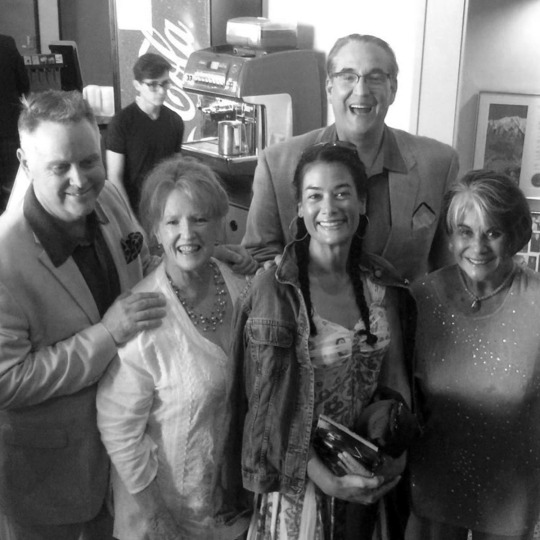
My final movie was THE BODY SNATCHER (’45), one of producer Val Lewton’s excellent cycle of chillers for RKO. Lewton’s films are usually classified as “horror,” not “noir,” but a case could certainly be made. There may not be a strong sense of fatalism to the proceedings, but stylistically and visually, this looks like many noirs of the period. But really, who cares? It’s a great film, it looked crisp in 35mm and the cast includes Boris Karloff, Henry Daniell and Bela Lugosi, a film lover’s dream.
Karloff’s daughter Sara regaled the audience afterward in her conversation with Alan Rode. I had interviewed her myself at the TCM Classic Film Festival in April and she was as charming and funny as ever. She spoke of her father’s love of gardening and the theater and his work as a founding member of the Screen Actors Guild in 1933. He was one of the twelve founding members and was very proud of this accomplishment because of his own suffering during outrageously long hours on the set before union rules existed to prevent studios from abusing their actors in such ways. She also said that “FRANKENSTEIN was his 81st film, and, as he said, no one saw the first 80!” Indeed, it’s easy to forget that Karloff had such a long career even before his turn as The Monster really “started” it.
Sara also brought along some rare home movies of her father (with herself as a toddler). They included very rare color footage of Boris Karloff in makeup as Frankenstein’s monster. She narrated the home movies expertly, including the funny story of the time her Dad, having shaved his own head to star in TOWER OF LONDON ('39), shaved little Sara’s head while her mother was out of the house one day. Mom was not pleased!
There was a final film in the festival: Jules Dassin’s masterful NIGHT AND THE CITY (’50), one of the quintessential titles in all of film noir, but I had to hightail it out of Palm and get back to the mean streets of Los Angeles. I’m already looking forward to next year. And I hope that now, you are, too.
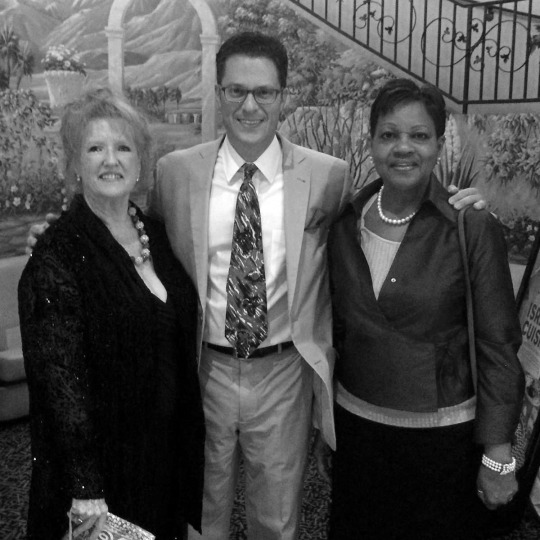
#film noir#Noir Alley#Eddie Muller#Foster Hirsch#Film Noir Foundation#Arthur Lyons Film Noir Festival#Alan Rode#Monika Heinreid#Sara Karloff#Andy Robinson#Hollow Trimuph#The Scar#The Chase#All The King's Men#Side Street#Black Angel#Split Second#Address Unknown#Meet Danny Wilson#Charley Varrick#Desperate#The Body Snatcher#Night and the City
25 notes
·
View notes
Photo
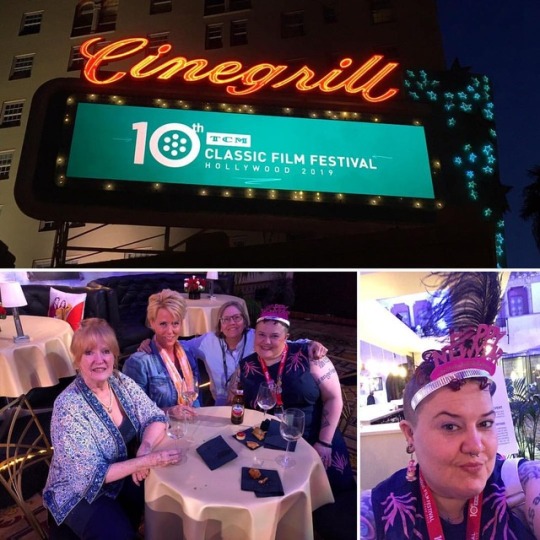
It’s been an AMAZING night so far!!!! Drinks & non-stop laughs with Alexa, @hollywoodphile & Monika Heinreid (!!). So far, my 10th yr of #TCMFF IS AMAZING!!!!! #ladiesnight https://www.instagram.com/p/BwI731hJH8Z/?utm_source=ig_tumblr_share&igshid=1qhfwlhu3evfq
0 notes